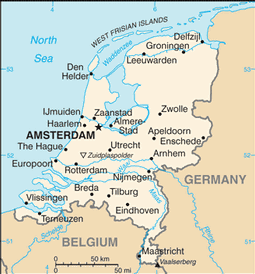When it comes to food, every country has its own specialities. Sure, one country more than the other, but they all have something they can claim as their own. The Netherlands is no exception. In fact, some might even say that we have a rather peculiar taste.
The type of food that blends perfectly into this peculiar category is the 'Bitterbal'.
The bitterbal is a typical Dutch (hot) snack which is extremely popular in the Netherlands. Just ask for a bitterbal in any Dutch bar or restaurant and they will gladly serve it to you.
But what is it and why is it so popular ?
According to Wikipedia (yes, I sometimes do my research) the definition of a bitterbal would be:
A savoury Dutch meat-based snack, typically containing a mixture of beef or veal, beef broth, butter, flour for thickening, parsley, salt and pepper, resulting in a thick roux.
Oke, so much for the cooking lesson.
Let's proceed with analyzing the name. That's pretty straight forward: bitter is bitter and bal is ball. So bitterbal in English would be ... bitterball. I bet you didn't see that coming?
Is the meaning of the name in English as strange as it is in Dutch? One is tempted to say yes because the name actually didn't change, but in fact the name in English is indeed as strange as it is in Dutch.
Hold on: didn't you just say the same thing twice?
I did, didn't I.
Isn't that confusing?
Ofcourse it is, but that's part of the fun. Wait until you hear my explanation before you judge.
When did the bitterbal originate? To understand that, we need to take a little tour down memory lane. Over a hundred years ago people in the pub wanted to have something savoury to snack. Some smart pants came up with this kind of meaty snack and eureka: the bitterbal was born.
Did it taste bitter? Well, no!
If you read back the Wikipedia definition, you will notice that the bitterbal does not contain any bitter ingredients at all. It is basically a deep fried piece of meat wrapped in a cocoon.
The reason why it is called a bitterbal, is because back in the day people in the pub used to drink (pints of) bitter like Jenever and therefor, since there are numerous bitters in both the Netherlands and the rest of the world, the name is as strange in Dutch as it is in English.
Thinking about it, maybe strange isn't the correct word. Let's go with surprising. The name is as surprising in Dutch as it is in English. Yeah, that's better.
At the start of my topic I asked the question why the bitterbal is so popular in the Netherlands. To be honest, I don't know. True, we Dutch love our snacks and are very creative about finger food, especially when it is deep fried. Maybe its popularity has something to do with the fact that the bitterbal contains meat. We Dutch love our meat.
Bonus question: Is the bitterbal healthy?
Come on guys: it's a deep fried snack with meat in it. Need I say more?
I would suggest to enjoy it whenever someone offers you one. Make sure to ask for the complementary Jenever to fully appreciate the hundred year old sensation. I promise you, it will rock your world.
Final tip: A bitterbal tastes best when served on wooden picks holding the Dutch flag.
So let me ask you: what's your favourite snack?
You can write it in the comments below. Make sure you mention the country from which the snack originates.
Follow my blog with Bloglovin





